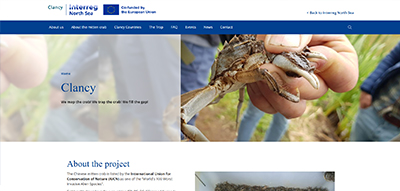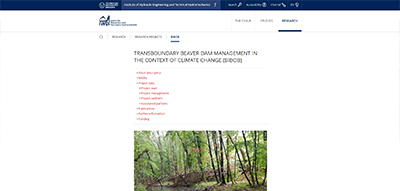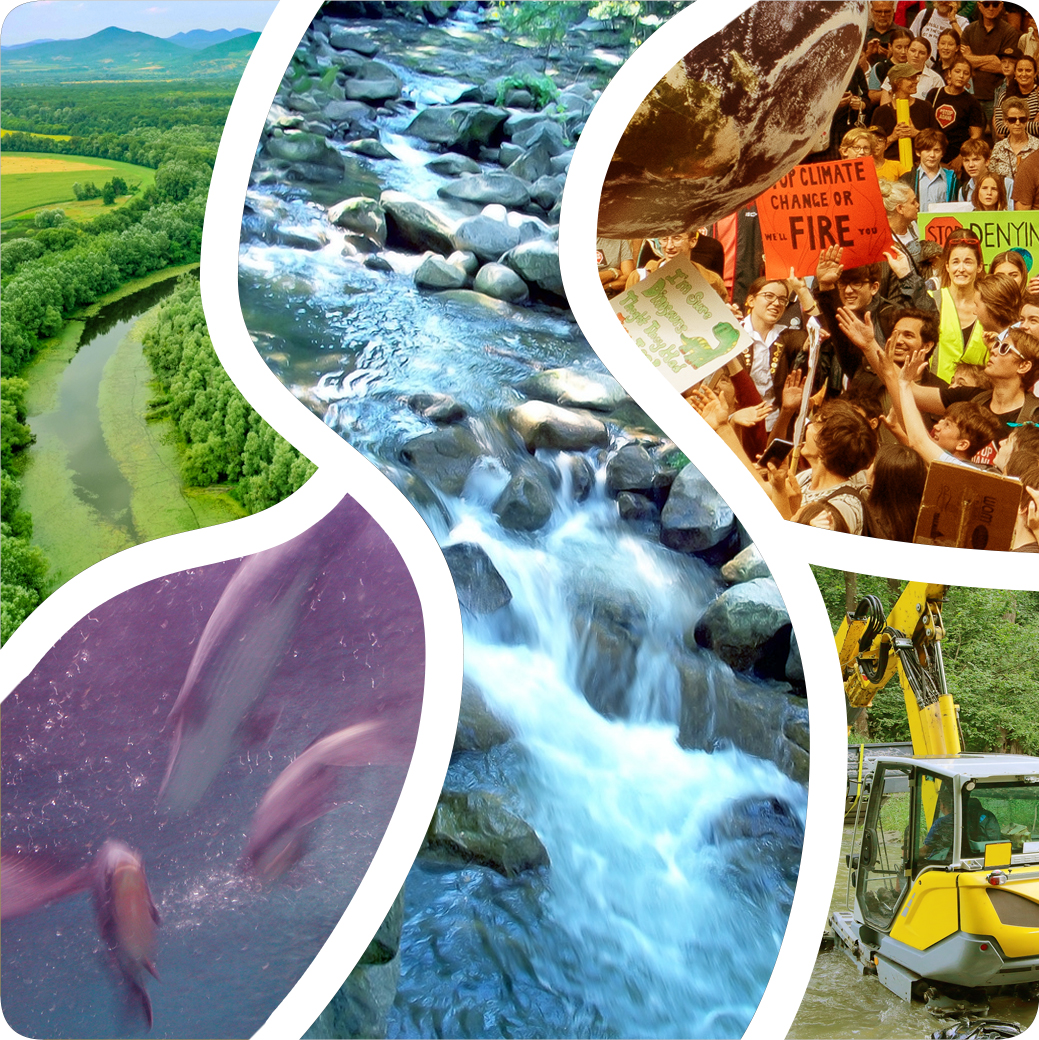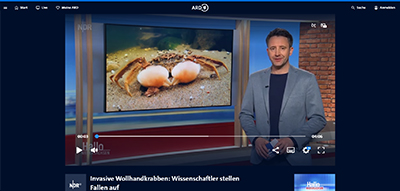Torsten Heyer
Senior Researcher / Dr.-Ing. - TUD Dresden University of Technology; Institute of Hydraulic Engineering and Technical Hydromechanics
Scientists & Researchers

My Projects
 Clancy
Clancy
We map the crab! We trap the crab! We fill the gap!
 Transboundary beaver dam management in the context of climate change (BIBOB)
Transboundary beaver dam management in the context of climate change (BIBOB)
- Key project facts
“CLANCY – Improve habitat quality and climate-adaptivity of freshwater ecosystems through management of alien invasive aquatic invertebrates” – duration: 05/2023-04/2028
facts: Comprehensive investigation of management strategies regarding the Chinese Mitten Crab in freshwater ecosystems
- What impact did these projects have on biodiversity, if any?
If we manage to reduce the number of Chinese Mitten Crabs (invasive alien species, “CMC”) migrating through our rivers, we are expecting to influence biodiversity (flora and fauna) positively, as we reduce the impact these animals as food competitor and damage on aquatic vegetation caused by them. In smaller tributaries and brooks, we are trying to keep them free of CMCs.
- What work challenges did you face and what approach did you take to solve them?
One major part of our project is the construction and operation of special traps, tailored for this species and for certain sit conditions. Technical challenges arise from the accessibility of the trap sites as well as from the construction, particularly foundation, of the traps on the river bed. A trap construction that is resilient against floods and vandalism is another technical challenge.
- What lessons learned are transferable to other places/projects?
A proper and comprehensive pre-survey of the study and action area is crucial for any project. With regard to rivers, particularly the hydraulic conditions at the individual sites need to be known or should be investigated (e.g. by numerical models or on site surveys) preferably over the whole discharge spectrum. This is relevant for the design and construction (technology, accessibility, costs) as well as for the operation and the long term success (monitoring, resilience, durability) of the measures.
- What is your biggest barrier and what are you trying to do about it?
The biggest barrier where not technical, but administrative/legal ones (getting permissions for trap installation took about 1 year!). However, the main technical challenge was the construction of the trap foundation, as deep foundations (ground anchors or similar) could not be used due to stones in the fluvial riverbed. Thus, we had to switch to shallow foundations.
My Focus and Approach
- Lessons Learnt - Some recommendations for others?
- What’s most important:
Consider time required for getting permissions (bureaucracy).
- Do this, not that:
Inform authorities early and involve them actively; use shallow foundations (rather than deep) for constructions in rivers.
- Always start by:
Approaching relevant authorities as soon as your ideas are reasonably concrete.
- What to do when things get difficult…:
Do not despair if new demands are constantly being made with regard to permissions. Be persistent and show understanding/stay in touch for/with the relevant institutions.
- 5 simple steps to:
- Have a concrete idea, what you want to do and achieve
- Be flexible (be open for adjustments or changes that might be asked for by relevant authorities)
- Communicate actively (involve broad public and authorities)
- Work interdisciplinary be persistent
- The biggest barrier and what I am trying to do about it:
The bureaucracy involved for getting permissions. I wish that the level of bureaucracy would be more flexible dependent on the kind, size and expected effect of measures.
- What’s most important:
My Journey
- My journey:
I studied civil engineering and specialised in hydraulic engineering; When dealing with levee failures I started dealing with digging animals (beavers, muskrat, coypu) as well. During an online conference, I learned about the problems with CMC in Belgium, as this species also digs into embankments. Thus, I got in touch with the Belgian partners who initiated a project activity in this regard in the Interreg North Sea - program. As the Elbe River flows into the North Sea and CMC do migrate upstream even until the Czech Republic, a trap installation in Dresden was also reasonable. Furthermore, we contribute to the project with our expertise in eco-hydraulics.
- My Education:
-
Civil engineering, Specialisation: Hydraulic Engineering (Diploma and PhD).
-
- The Big Change:
The interdisciplinary and cross-border cooperation is crucial and very beneficial especially for riverine projects. Through such projects a common understanding among experts from different fields arises, which (can) lead to sound and holistic solutions.
- Favourite part of the work I do:
Improving my knowledge regarding the interaction of physics (e.g flow characteristics) and biology (migration behaviour of CMC).
Interview
Key Topics:
Key Topics
These relate to specific topics (e.g. technical solutions; restoration activities etc.) addressed within the showcase materials.
- Management of Invasive species
- Trapping (Construction, Operation, Maintenance)
- Handling of catches
- Generalisation and Transferability
Prone2Success Factors Demonstrated:
Prone2Success Factors Demonstrated
These are the Prone2Success checklist factors which are highlighted within this showcase. More information on the Prone2Success checklist can be found here.
- Measurable goals to improve ecological status
- Measurable goals to improve ecosystem services
- Supports WFD, NRL and other restoration policy goals
- Communicate/engage with stakeholders from the outset
- Engage with the local community from the outset
- Include long term monitoring
- Include adaptive management approaches (combined with monitoring)
- Ensure stakeholder understanding / education of restoration goals & benefits
- Demonstrate specific ecological improvements/legal compliance / communicating results during and after the project
- Take climate change into account
NRL Restoration Categories:
NRL Restoration Categories
These are the restoration categories (listed under Annex VII of the European Nature Restoration Law (NRL) which are relevant to this showcase.
- [7] Re-naturalise river beds
- [8] Restore natural sedimentation
- [24] Remove / control invasive species
- [26] Restore fish spawning / nursery areas
Was this information useful?
No
Thank you for submitting feedback.
Click here to share your thoughts
Acknowledgements & Links
This material was provided by: Torsten Heyer, TUD Dresden University of Technology.
Thanks to co-funding of “Clancy” by the EU-program “Interreg North Sea”, to all project partners (see project website) as well as to the Environmental and nature conservation authority of the Saxon state capital Dresden, Waterways and Shipping Administration (Dresden), Anglers' Association “Elbflorenz”, Fishing authority of the Saxon State Office for Environment, Agriculture and Geology.



